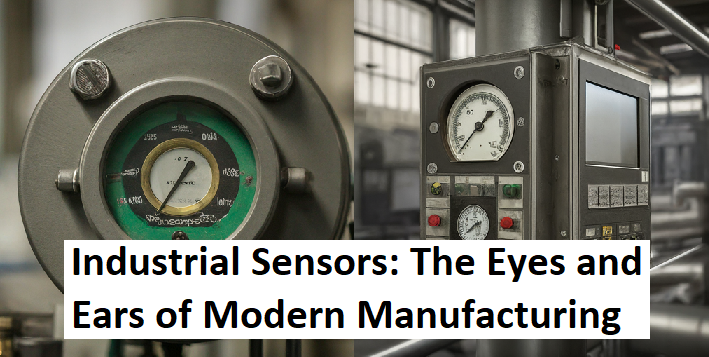Industrial Sensors: The Eyes and Ears of Modern Manufacturing is a comprehensive article that explores the various types of industrial sensors, their applications, and the benefits they provide. Discover how these essential devices monitor critical parameters, enabling efficient operations, improved quality, and reduced costs in manufacturing processes.

Industrial sensors are the electronic devices that serve as the eyes and ears of modern manufacturing processes. They monitor various parameters, such as temperature, pressure, flow rate, vibration, and position, to provide critical data for process control, quality assurance, and predictive maintenance.
Types of Industrial Sensors
Industrial sensors come in a wide variety, each designed to measure specific parameters. Some common types include:
- Temperature Sensors:
- Thermocouples
- Resistance Temperature Detectors (RTDs)
- Thermistors
- Infrared (IR) sensors
- Pressure Sensors:
- Diaphragm gauges
- Strain gauges
- Capacitive sensors
- Flow Sensors:
- Mass flow meters
- Volume flow meters
- Ultrasonic flow meters
- Magnetic flow meters
- Vibration Sensors:
- Accelerometers
- Velocity sensors
- Displacement sensors
- Position Sensors:
- Potentiometers
- LVDTs (Linear Variable Differential Transformers)
- Rotary encoders
- Magnetic sensors
Applications of Industrial Sensors
Industrial sensors are used in a wide range of applications, including:
- Process Control: Monitoring and controlling critical process parameters to ensure product quality and consistency.
- Quality Assurance: Inspecting products for defects and ensuring compliance with standards.
- Predictive Maintenance: Predicting equipment failures before they occur, reducing downtime and maintenance costs.
- Safety: Monitoring hazardous conditions and triggering alarms to prevent accidents.
- Energy Efficiency: Optimizing energy consumption by monitoring and controlling equipment performance.
Benefits of Industrial Sensors
The use of industrial sensors offers several benefits, including:
- Improved Efficiency: Real-time data from sensors enables more efficient operations and reduced waste.
- Enhanced Quality: Consistent monitoring and control of process parameters lead to higher product quality.
- Reduced Costs: Predictive maintenance and early detection of equipment failures can significantly reduce maintenance costs.
- Increased Safety: Sensors can help identify and mitigate potential hazards, improving workplace safety.
- Better Decision Making: Data from sensors provides valuable insights for informed decision-making.
Future Trends in Industrial Sensors
As technology continues to advance, we can expect to see new and innovative industrial sensors emerging. Some potential trends include:
- IoT Integration: Sensors will be increasingly integrated with the Internet of Things (IoT) to enable remote monitoring, data analysis, and predictive analytics.
- Smart Sensors: Sensors with built-in intelligence and capabilities for self-calibration and diagnostics.
- Miniaturization: Smaller and more compact sensors will enable their use in a wider range of applications.
- Wireless Sensors: Wireless sensors will eliminate the need for complex wiring and simplify installation.
- Nanotechnology: Sensors based on nanotechnology will offer improved sensitivity and accuracy.
In conclusion, industrial sensors are essential components of modern manufacturing processes. They provide valuable data for process control, quality assurance, and predictive maintenance, leading to improved efficiency, reduced costs, and enhanced safety. As technology continues to evolve, we can expect to see even more sophisticated and innovative sensors shaping the future of manufacturing.
Home | Join us on Facebook, Twitter, YouTube, Instagram, Quora, Reddit, LinkedIn, Pintereset, Blogger.